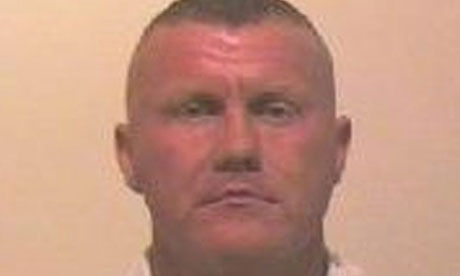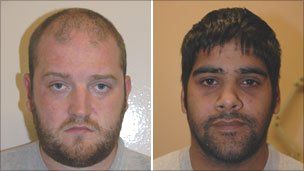
Raoul Moat

Raoul Moat
We’ve all seen this sort of thing on TV, but when it happens for real there is nothing romantic or exciting about it. This inquest is not a whodunnit but a why done it, and is scheduled to last up to four weeks. Raoul Moat may have been a violent man, but he was also clearly deranged. At least one author has suggested his derangement was caused or exacerbated by his use of steroids, something he had in common with David Bieber and Anders Behring Breivik. His short but bloody reign of terror began after he was released from prison.
Raoul Thomas Moat was born at Newcastle upon Tyne on June 17, 1973, and had that distinctive, thick “Geordie” accent. Moat was an artisan, and had worked variously as a panel beater, bouncer and latterly as a tree surgeon. He appears to have led a fairly non-descript life until late 2009/early 2010 when he was sentenced to 18 weeks in prison for an assault on a 9 year old child. Because of the legal anonymity that surrounds all or most such cases in Britain, it is not possible to confirm exactly what happened, suffice it to say this appears to have been some sort of family incident, and there is no suggestion that Moat indecently assaulted the victim or that he was any kind of sexual predator, indeed, he had been in a relationship with a woman some 14 years his junior with whom he had a young daughter, and had two children from a previous relationship. Prior to his conviction for this offence, which he served in Durham Prison, he had one conviction for common assault – the lowest level of violence – although he had been arrested a number of times over what appears to have been an ongoing feud.
While he was serving his sentence, his by this time former lover Samantha Stobbart wrote to him telling him their relationship was over – what is known as a “Dear John” letter. Unfortunately, she added both that she had found a new love – which was true – and that he was a police officer – which was not. The purpose of this white lie appears to have been to frighten him off coming near her again, which tends to suggest there had been a history of violence in this relationship too. Unfortunately, her warning had the entirely opposite effect from the one she had intended.
Moat had already been harbouring a grudge against the police, having believed he’d “lost everything” including his business because of them. Now he thought he’d also lost the woman he would claim was the love of his life, and two days after his release from prison, he embarked on a short but bloody campaign of revenge.
In the small hours of July 3, 2010, he turned up at the home of Samantha Stobbart shooting and wounding her, and killing her new lover, Chris Brown. The following day, he shot PC David Rathband as he sat in his patrol car by the side of the road. This was not the first time their paths had crossed; Rathband had on a previous occasion seized Moat’s van, believing it to have been uninsured – he was wrong. It is not clear though if Moat recognised the officer but he appears to have targeted him purely because of his uniform; he phoned the police twelve minutes before the shooting to advise them of his intentions, and again 50 minutes afterwards.
Although PC Rathband survived the murderous assault, he was, and remains, blinded, having been the third person to feel the wrath of Moat’s sawn off shotgun; there would be one more – Moat himself.
The shooting of PC Rathband raised the stakes, and Moat became the subject of arguably the biggest and most intensive manhunt ever in that part of Britain. It ended in the small hours of July 10 when he was cornered in the Northumberland town of Rothbury; after holding his weapon to his head for several hours, he finally pulled the trigger.
Moat left a long, rambling testament, both written and recorded, which reveals both that he was psychotic, and the fact that he knew he was psychotic. He had sought psychiatric help sometime before his rampage, but to no avail.
Apart from the waste of his own life, the murder of Chris Brown and the devastation – both physical and psychological – he caused other people, there are some really disturbing features of this case that reflect as badly on contemporary Britain as on the gunman himself. One is that Moat was aided actively by two men who had absolutely nothing to gain: their evil deeds earned 26 year old Karl Ness and 23 year old Qhuram Awan life sentences with heavy tariffs when they were convicted at Newcastle Crown Court earlier this year. It might even be argued they were more culpable than Moat because it is quite likely that Moat would have been found unfit to plead if the police had managed to take him alive. These two have no such excuse.

Official police photographs of Karl Ness and Qhuram Awan, the accomplices of Raoul Moat.
(Public domain – police photographs)
[The above op-ed was first published September 6, 2011 (UK time) not September 5 as shown by the archived version.]
Back To Digital Journal Index